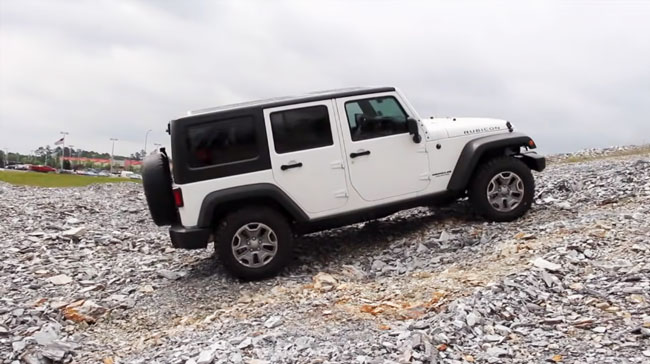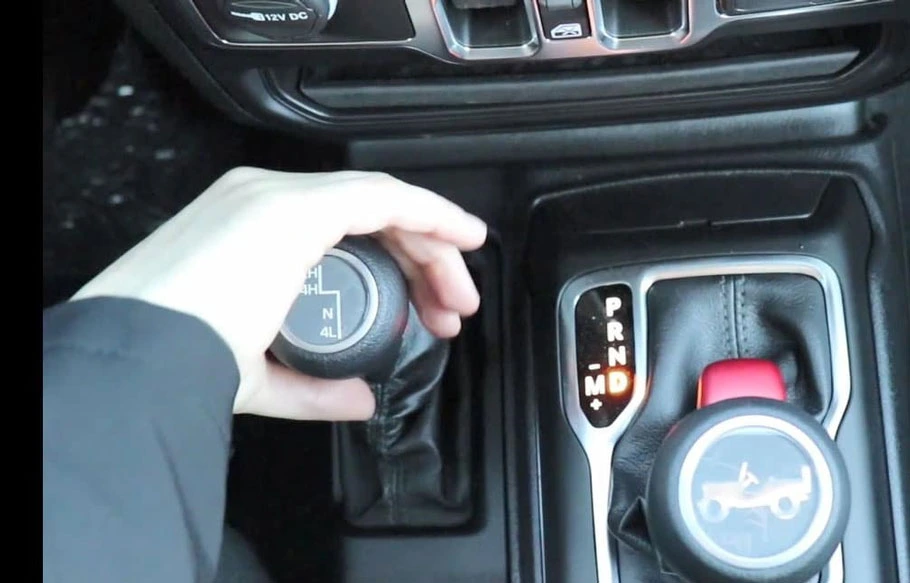Your Jeep Wrangler is a powerful beast that only waits for your command to be unleashed. Be it a regular road condition or a challenging one, Wrangler can take any of them on almost effortlessly with around 300 Horsepower.
But in order to know how to properly utilize your beast, you need to have the precise knowledge of your features, that includes your 4 Wheel Drive mode. This setting can turn your innocent Wrangler into such a monster that can undertake any slippery, muddy or traction-wise tricky situations.
Our article offers you the basic understanding of a 4 Wheel Drive (4WD) system, why & when to put your Wrangler in this mode, some basic guidelines with a major focus on how to put it in 4WD. So keep scrolling to learn all of these and become the master of diversity in road conditions!
How Does A 4 Wheel Drive Work?
A 4 wheel drive is known by different names – 4×4, four by four, or 4WD. The function of a 4 wheel drive is exactly as it sounds like, it drives with all four wheels unlike regular cars that drive with two.
The basic principles of a car engine is to provide torque to both of its rear wheels for acceleration. But a 4 Wheel Drive car can still be two-axle and simultaneously supply throttle to all four wheels via a transfer case.
Why Put It In 4WD?

Putting your Jeep Wrangler in 4 Wheel Drive won’t be a daily need if you’re driving in dry conditions within urban areas. It is usually needed for adverse driving conditions, such as- wet roads, mud, clay, uphill climb, off-road situations, pulling something heavy and so on.
It means when your real wheels aren’t able to properly provide enough power to scrummage through a difficult situation, you’ll need to seek refuge in 4 Wheel Drive mode.
When To Put Your Jeep Wrangler In 4WD?
Putting your Jeep Wrangler in 4WD mode won’t always be necessary. Let us guide you through a list of circumstances that may require you to make this shift, so that you can have a better understanding of the 4WD functions.
Conditions For Using 4H
Mostly off-road conditions are the best time for you to drive in 4H. Be it muddy, slippery, dirt or sandy surface, your Jeep Wrangler will push through like a beast with this setting.
Also, when it’s raining and the roads are very wet and slippery, you can utilize this setting for the maximum traction.
Conditions For Using 4L
This setting is ideal for low-speed and high-energy situations. Like, when you’re climbing an upward-inclined muddy surface, or driving through thick layers of snow, you should opt for the 4L gear.
You should consider this option when in extremely muddy or slippery situations, as the engine will provide more torque to your front wheels and help you climb out victorious from your sticky circumstances.
The Available 4WD Gear Choices
Let’s take a look first at the available choices of 4 Wheel Drive gears before learning how to put a Jeep Wrangler in 4 Wheel Drive, because having a good knowledge about each selector is essential in this process.
When you look at your 4WD selector, you’ll find that there are 4 available option names written on your shifter: 2H or 2Hi, 4H or 4Hi, N and 4L or 4Lo.
2H or 2Hi
This is the option that you’ll be using in regular conditions. This setting will utilize 2 Wheel Drive mode and will not provide additional torque to the other two wheels.
You’ll find this option on the very top of your shifter and you can speed up to your desired (and of course within speed limits) level with this.
4H or 4Hi
This option is located right below the 2H mark. This is your transition point from 2 Wheel Drive to 4 Wheel Drive.
N or Neutral
This is the neutral option and it’s located below 4H but a little to the right side. It suggests that you need to pull your 4WD Selector to a bottom right angle to reach this setting.
It is essential for a number of reasons: like when you need to coast or start from a halted position, you have to put your Jeep Wrangler in this neutral setting.
4L or 4Lo
You’ll find this option on the bottom fight of your 4WD Selector, marked right below N. This is the only other 4 Wheel Drive option than 4H, and both of them have their significance in different conditions.
How To Put A Jeep Wrangler In 4 Wheel Drive?
Now that we’ve all been familiarized with the available 4WD options in a Jeep Wrangler, let’s now learn putting it in 4WD in 3 quick steps.
Step 1: Assess
Before you shift to 4WD mode, you first need to assess whether it is necessary to do so. If you believe your assessment is correct and you need to transition to 4WD, then take the next step.
Step 2: Shift to 4H
Now comes the step where you shift from 2WD to 4WD. For this, your car should be stationary or not going any faster than 28 mile per hour (45 Kph).
Remove your footing from the accelerator and let it coast.
For Automatic Transmission: Change the gear shift selector from (D) Drive to (N) Neutral while pressing on the brake pedal briefly and pull your 4WD Gear Selector from 2H to 4H.
For Manual Transmission: Step on your Clutch and shift the 4WD from 2H to 4H.
Shifting without accelerating helps the transfer case to distribute torque to the front wheels faster. Once your indicator light on the dashboard signals that you’re on 4H, shift the gear shift selector from (N) to (D) and release the brake. For manual gear, just release the Clutch and accelerate away.
Step 3: Shift to 4L
Your shift from 2H to 4H marks the transition into 4 Wheel Drive mode. For your shift from 4H to 4L, you must be coasting at no more than 2 to 3 miles per hour (3 to 5 Kph).
For Automatic Transmission: While at the mentioned speed, press your brakes and shift your drive mode from (D) to (N) and release the brakes. While at this stage, pull your 4WD Gear Selector all the way from 4H from 4L.
For Manual Transmission: You have to press and hold the clutch right before shifting from 4H to 4L. Let the clutch go and accelerate once your shifting is completed.
REMEMBER: YOU DON’T NEED TO PAUSE AT ‘N’ BETWEEN 4H & 4L, RATHER YOU’LL SHIFT IT ALL THE WAY IN ONE GO.
Basic Guidelines For Jeep Wrangler 4WD
Let’s now take a look at a few tips that may come in handy while you’re shifting between your 4WD drive options.
- You should NEVER use 4H or 4L on regular conditions. Your car might make sudden acceleration, or you’ll burn more fuel inefficiently and end up causing your system to heat up. There have been cases where even cars broke down because of using 4WD in wrong conditions.
- While engaging 4WD, always remove your footing from the accelerator.
- Speed Limits: 4H should not exceed 50 miles per hour (80 Kph) in slippery surfaces and 4L should not exceed the speed of 25 miles per hour (40 Kph).
- Never make a direct shift from 2H to 4L, or 4L to 2H.
If you follow these guidelines properly, we hope you’ll do just fine in any road conditions.
Final Thoughts
Jeep Wranglers are made for adventures into adverse situations, and it’ll tackle almost any obstacle you throw at it. Only important thing would be knowing how to situate your car in which setting and when to do that.
We hope that our article will help you in overcoming all 4WD based hurdles in your upcoming ventures, as we tried to be thorough in each sector that we’ve covered. All we can say now is: “Bon voyage” for your new experiences with your Wrangler!
